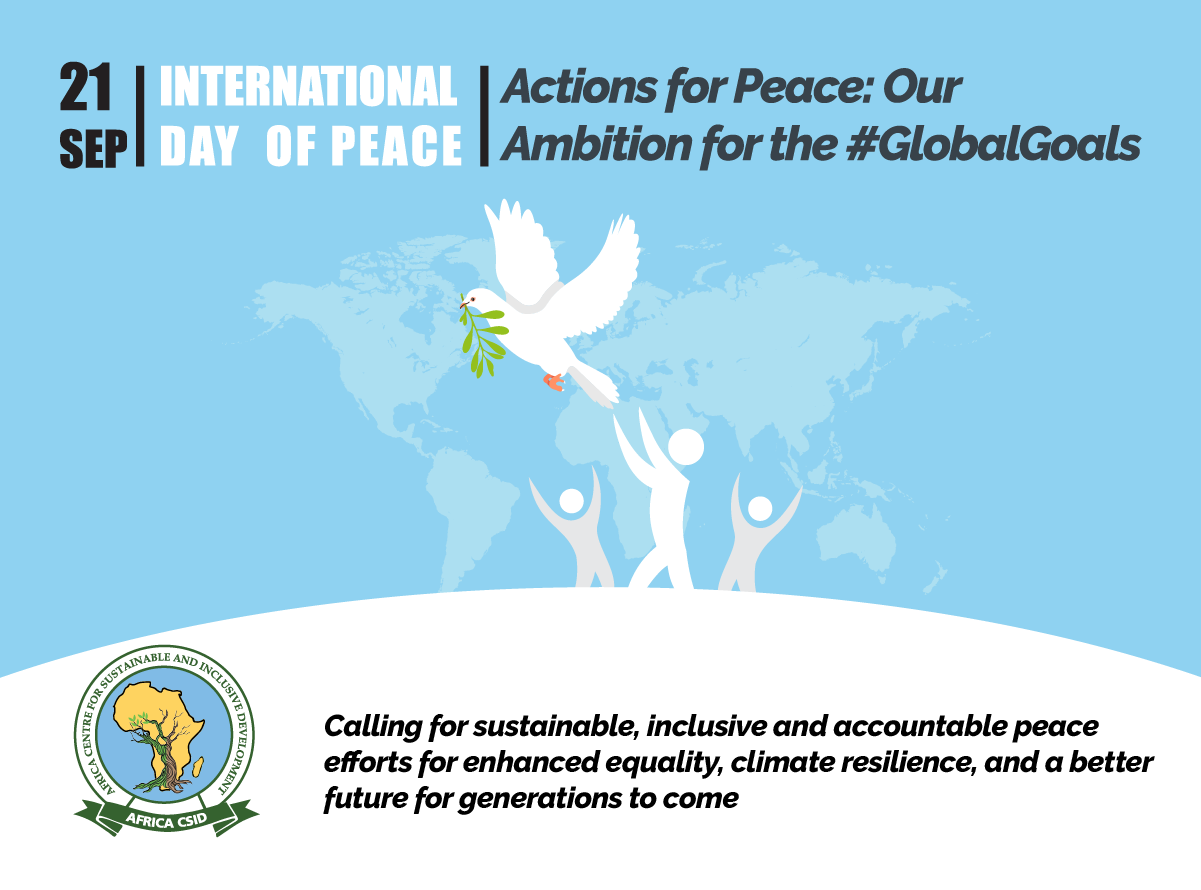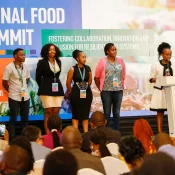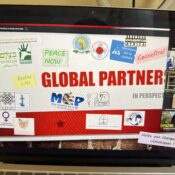
The Interplay of Violence and Global Actions: A Call for Sustainable Peace Efforts
Background
The International Day of Peace is an annual observance on September 21st, established in 1981 by the United Nations General Assembly. This significant day is dedicated to promoting non-violence and cease-fire globally (United Nations, n.d.). On this occasion, the United Nations encourages people worldwide to pause for one minute of silence at noon, as a heartfelt tribute to the victims of war and violence. The day commences with the Peace Bell Ceremony at the United Nations headquarters, a remarkable bell donated by the United Nations Association of Japan in June 1954. This bell, forged from metal that includes coins contributed by individuals from 65 member countries, symbolizes hope for lasting peace and is rung on various occasions, including International Peace Day. Following the bell’s solemn ringing, the UN Secretary-General delivers a message advocating for a cease-fire (British Council, n.d.). There have been instances where such calls for peace have yielded positive results; for instance, in 2008, Afghanistan witnessed a remarkable 70% reduction in violence on the International Day of Peace (Rueckert, 2016).
This year’s theme is “Actions for Peace: Our Ambition for the #GlobalGoals,” serving as a clarion call for collective and individual responsibility in nurturing peace (United Nations, n.d.). Fostering peace aligns with Sustainable Development Goal (SDG) 16, which aims to promote just, peaceful, and inclusive societies. The urgency of this call to action is underscored by the fact that there are only seven years left for the world to achieve the SDGs, with data revealing that nearly half of the approximately 140 SDG targets that can be evaluated are deviating moderately or severely from the desired trajectory. Furthermore, over 30% of these targets have seen no progress or even regressed since 2015 (United Nations, 2023b).
Examining the data, it becomes apparent that there are gaps, particularly in crosscutting goals like goal 16, which focuses on peace, justice, and strong institutions. Less than half of the 193 countries or regions have internationally comparable data since 2015 (United Nations, 2023a). This underscores the need for improved data collection, management, and dissemination. The discourse surrounding data should be a priority as we concentrate on effective and timely actions within SDG 16.
Global Performance and Challenges
The implementation of SDG 16 is notably lagging behind, largely attributed to ongoing and emerging violent conflicts worldwide. Disturbingly, 2022 witnessed a more than 50% increase in civilian deaths related to conflicts. By the end of 2022, a staggering 108.4 million people were forcibly displaced worldwide, marking a 19 million increase from the previous year and two and a half times the number a decade ago (United Nations, 2023a). These trends suggest a potential retrogression in achieving SDG 16’s targets.
The 2023 Global Peace Index (GPI) report presents a mixed picture, with most indicators showing negative results for SDG 16. Over the past 15 years, global peace has deteriorated, with the average country score declining by five percent (Oluwole, 2013). The report reveals that global peacefulness has worsened for the ninth consecutive year, with 84 countries experiencing a decline, including Ethiopia, Myanmar, Ukraine, Israel, and South Africa. Conflict-related deaths worldwide increased by 96% to reach 238,000 (Institute for Economics & Peace, 2023). Sixteen out of the 23 GPI indicators worsened between 2008 and 2023, while eight improved (Oluwole, 2013). Conflicts are becoming increasingly internationalized, involving 91 countries in some form of external conflict, up from 58 in 2008 (Institute for Economics & Peace, 2023). Addressing these deteriorating trends while supporting countries making progress is imperative.
Africa’s Status and Challenges
The GPI report reveals a mixed picture for Africa, with sub-Saharan Africa facing particular challenges. Mauritius, the most peaceful African country, is ranked 23rd in the GPI. Sub-Saharan Africa experienced a slight decline in peacefulness in the 2023 GPI, with the average country score decreasing by 0.57 percent. Among the 44 countries in the region, 21 showed improvement, 22 deteriorated, and one remained unchanged (Oluwole, 2013). In contrast, the Middle East and North Africa (MENA) region has shown improvement for three consecutive years (Institute for Economics & Peace, 2023). The top 10 most peaceful African countries, according to the report, are Mauritius, Botswana, Sierra Leone, Ghana, Senegal, Madagascar, Namibia, The Gambia, Zambia, and Liberia. Notably, Ethiopia recorded a higher number of conflict-related deaths than Ukraine.
Unfortunately, four of the 10 least peaceful countries globally are in Africa, including Sudan (second), Somalia (third), Congo (DRC) (sixth), and South Sudan (seventh). Among the five most deteriorating countries, Mali, an African nation, is included (Institute for Economics & Peace, 2023). However, there is hope, as some African countries have made significant improvements in the index. Three of the five most improved countries are African: Libya, Burundi, and Cote D’Ivoire. Remarkably, several African nations, despite facing high levels of terrorism in the Sahel region, recorded no deaths from terrorism in 2022, including Morocco, Mauritius, Senegal, The Gambia, Guinea-Bissau, Guinea, Sierra Leone, Liberia, Cote D’Ivoire, and Ghana (Institute for Economics & Peace, 2023).
The Human and Planetary Costs
The impact of violence and war extends beyond country ratings and loss of lives, affecting humanity and the planet itself. Violence and conflict directly impact economies, with the 2022 economic impact estimated at USD 17.5 trillion, equivalent to 12.9% of the world’s total GDP or USD 2,200 per person. This represents a 17% increase, or USD 1 trillion, from previous years (Institute for Economics & Peace, 2023). This impact has significantly contributed to the ongoing global economic crises faced by numerous nations. Remarkably, those marginalized economically are often caught up in conflicts and violence, unaware that their actions may further deepen their poverty and disempowerment. A mere 10% reduction in violence could redirect USD 1.75 trillion towards other economic endeavors, highlighting the potential for positive change (Institute for Economics & Peace, 2023).
Numerous studies have convincingly demonstrated a cause-and-effect relationship between violence and economic growth, with a direct connection to inequality (Fajnzylber, Lederman, & Loayza, 2002). Violence and crime not only perpetuate inequality but can also widen disparities in developmental outcomes (UNDP, 2021). Paradoxically, greater inequality can create conditions conducive to more violence. From an economic perspective, this link can be explained by the fact that heightened disparities often provide incentives that make illegal activities more appealing than lawful alternatives, as suggested by Becker (1968). This dynamic has macroeconomic implications, as crime and violence can undermine and distort investments, impact the formation of human capital, thereby affecting productivity, and lead to the depletion of physical and natural resources (Soares, 2015). The costs incurred, including medical expenses, lost productivity, and public expenditures on security, amount to a substantial 3.7 percent of overall production (Jaitman, 2017). The consequence is an exacerbation of inequality, particularly affecting marginalized populations, although its effects ripple through the entire economy in the form of a “hidden tax”, deterring both domestic and foreign investors, reducing the competitiveness of businesses, and distorting resource allocation due to increased uncertainty and inefficiency (Detotto & Otranto, 2010).
Beyond its impact on humanity, violence also has direct and indirect consequences for natural resources. Violence directed at natural capital, such as water contamination resulting from illegal mining, pipeline destruction, or the seizure of fossil fuels, as well as deforestation aimed at clearing land for resource-intensive production activities (e.g., monoculture, extensive livestock breeding, illicit crops), and biodiversity losses due to violent conflicts, poses significant harm. These actions entail implicit societal costs by inefficiently depleting existing resources, contributing to climate change, and depriving future generations of the opportunity to utilize these resources (UNDP, 2021).
Another dimension of the impact on natural resources involves the disruption of the lifestyles of ethnic communities that have, over centuries, established alternative systems of settlement and conservation in ecologically rich territories. Such disruptions can result in deforestation and forest degradation, further affecting the climate and jeopardizing the preservation of natural capital for future generations (UNDP, 2021).
It is clear that achieving global peace is intertwined with various global initiatives, including bolstering the climate resilience of the most marginalized and vulnerable groups (UNESCO, 2022). Effective climate action also plays a pivotal role in achieving global peace. The interconnectedness of these two components underscores the necessity for a collaborative approach in addressing these issues. It is encouraging to note that numerous stakeholders have already initiated joint actions, exemplified by the inclusion of a Peace Day in the upcoming COP28, signaling goodwill toward collaborative efforts on peace and other global endeavors. However, there remains a need for greater ambition and action in this regard, accompanied by inclusive and robust financing, especially for marginalized communities.
In light of the current global landscape marred by violence and conflict, it is essential for all stakeholders to consider the comprehensive cost-benefit analysis of violence on humanity and the planet before engaging in any violent actions. Raising awareness about this and advocating for a shift towards embracing peace among diverse groups is crucial. This shift is not only a means to improve the present quality of life for humanity and the planet but also an investment in a better future for generations to come. While it may be challenging to quantify the true human cost of violence or the enduring trauma it inflicts, we must continue using the cost-benefit analysis as much as possible and remain committed to pursuing peace.
Furthermore, there should be a heightened focus on and support for SDG 16 in Africa, specifically in Sub-Saharan Africa. This will not only contribute to the attainment of peace but also address existing inequalities and the adverse impacts of climate change facing the region.
While our attention may be on international conflicts and gatherings, it remains crucial for each of us to undertake individual actions aimed at creating a more peaceful world. This can begin with each person taking steps to safeguard both humanity and the environment, ultimately working to eliminate chaos. When people unite in actions, positive transformations happen. We all have a role to play in making the world a more peaceful place.
References
Becker, G. S. (1968). Crime and Punishment: An Economic Approach. Journal of Political Economy, 76(2), 169 – 217.
British Council. (n.d.). The International Day of Peace. Retrieved September 20, 2023, from British Council: https://learnenglish.britishcouncil.org/general-english/magazine-zone/international-day-peace
Demombynes, G., & Özler, B. (2005). Crime and Local Inequality in South Africa. Journal of Development Economics, 76(2), 265 – 292.
Detotto, C., & Otranto, E. (2010). Does Crime Affect Economic Growth? KYKLOS, 63(3), 330 – 345.
Fajnzylber, P., Lederman, D., & Loayza, N. V. (2002). What Causes Violent Crime? European Economic Review, 46(7), 1323 – 1357.
Fearon, J. D., & Anke, H. (2014). Benefits and Costs of the Conflict and Violence Targets for the Post-2015 Development Agenda: Post-2015 Consensus. Conflict and Violence Assessment Paper. Tewksbury, MA: Copenhagen Consensus Center.
Institute for Economics & Peace. (2023). Global Peace Index 2023: Measuring Peace in a Complex World. Sydney: Institute for Economics & Peace. Retrieved September 20, 2023, from World Trade organization: https://www.wto.org/library/events/event_resources/tfp_2007202313/233_819.pdf
Jaitman, L. (2017). The Costs of Crime and Violence: New Evidence and Insights in Latin America and the Caribbean. Washington, DC: Inter-American Development Bank.
Oluwole, V. (2013, July 10). 10 most peaceful African countries in 2023. Retrieved September 20, 2023, from Business Insider Africa: https://africa.businessinsider.com/local/lifestyle/10-most-peaceful-african-countries-in-2023/tv0vcwj
Rueckert, P. (2016, September 21). Why We Celebrate the International Day of Peace. Retrieved September 20, 2023, from Global Citizen: https://www.globalcitizen.org/en/content/why-we-celebrate-the-international-day-of-peace/?gclid=CjwKCAjwjaWoBhAmEiwAXz8DBfeFvSmVqjp56-ydN9aLlE_-4UjotQRJO_G058e8ele1dMajTQbv5xoCwWcQAvD_BwE
Soares, R. R. (2015). Welfare Costs of Crime and Common Violence. Journal of Economic Studies, 42(1), 117 – 137.
UNDP. (2021). The Links between Violence, Inequality and Productivity. In UNDP, Regional Human Development Report 2021 | Trapped: High Inequality and Low Growth in Latin America and the Caribbean (pp. 183 – 237). New york: UNDP.
UNESCO. (2022). International Day of Peace. Retrieved September 20, 2023, from UNESCO: https://www.unesco.org/en/days/peace
United Nations. (2023a). The Sustainable Development Goals Report 2023 Special Edition: Towards a Rescue Plan for People and Planet. United Nations.
United Nations. (2023b, July 10). World risks big misses across the Sustainable Development Goals unless measures to accelerate implementation are taken, UN warns. Retrieved September 20, 2023, from United nations: https://www.un.org/sustainabledevelopment/blog/2023/07/press-release-world-risks-big-misses-across-the-sustainable-development-goals-unless-measures-to-accelerate-implementation-are-taken-un-warns/
United Nations. (n.d.). Goal 16: Promote just, peaceful and inclusive societies. Retrieved September 20, 2023, from United Nations: https://www.un.org/sustainabledevelopment/peace-justice/
United Nations. (n.d.). International Day of Peace 21 September. Retrieved September 20, 2023, from United Nations: https://www.un.org/en/observances/international-day-peace



